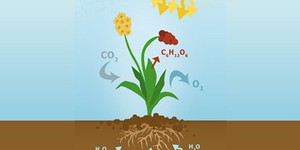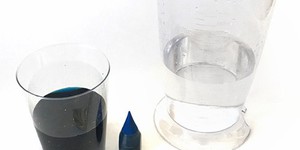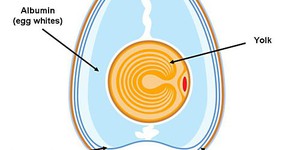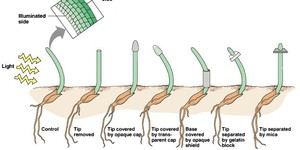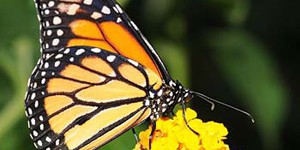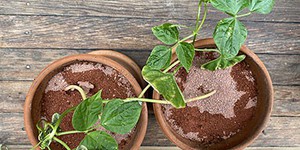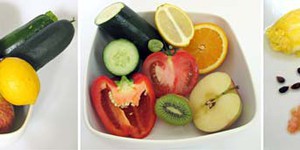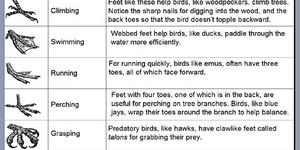U.N. Sustainable Development Goal: Life on Land (90 results)
The United Nations Sustainable Development Goals (UNSDGs) are a blueprint to achieve a better and more sustainable future for all.
These projects explore topics key to Life on Land: Sustainably manage forests, combat desertification, halt and reverse land degradation, halt biodiversity loss.
These projects explore topics key to Life on Land: Sustainably manage forests, combat desertification, halt and reverse land degradation, halt biodiversity loss.
|
Sort by
|
Have you ever seen a (non-carnivorous) plant eat? Probably not! Plants do not get the energy they need from food, but from the sunlight! In a process called photosynthesis, plants convert light energy, water, and carbon dioxide into oxygen and sugar. They can then use the sugar as an energy source to fuel their growth. Scientists have found an easy way to measure the rate of photosynthesis in plants. The procedure is called the floating leaf disk assay. In this plant biology project, you can…
Read more
In the wild there are two types of animals: the hunters and the hunted. A good predator is always on the prowl for fresh prey. What can an animal do to stay off of the menu? Some animals have evolved to use a variety of camouflage tactics so they can fool their predators and increase their chances of survival. In this science project, you will be the hungry predator hunting for M&M® prey. But it may not be as easy as it sounds — some of your prey will be camouflaged. Will they be…
Read more
Have you ever heard someone say, "that plant is thirsty" or "give that plant a drink of water"? We know that plants, and even bouquets of cut flowers, need water to survive, but have you ever thought about how the water moves within the plant? In this science project, you will use colored water and carnations to figure out where the water goes.
Read more
Have you ever wondered how a chick breathes inside its shell? Every animal needs oxygen to survive, so the chick must get air somehow! Try this science project to discover the answer.
Read more
Plants move—not very quickly compared to animals, but they do move. Their roots grow downward in response to gravity, and their stems grow upward toward the Sun. In this plant biology science fair project, you will investigate how young plants respond through movement to light.
Read more
There is strong interest in "going green," including using products that cause less environmental damage when they are disposed of. In this environmental sciences project, you will compare the toxicity of "green" and conventional liquid detergents using worms as test organisms.
Read more
Have you ever seen butterflies fluttering around outside, gliding through the air and landing on flowers? While they are delicate and fragile, butterflies are actually excellent flyers. They are so good, in fact, that scientists at Harvard University studied butterfly wing shapes as an inspiration for building a miniature flying robot. In this science project, you will do your own version of the Harvard scientists' experiment to measure the flight performance of butterfly wings.
Read more
To be able to live on Mars, humans need breathable air, clean water, and nutritious food. Spacesuits can provide oxygen to breathe, ice on Mars can be a source of water, but how could we get nutritious food? Today's astronauts bring food with them. But a manned trip to Mars would require food that was either successfully grown in space or on Mars, as taking the extra weight of food for such a long time—it takes 6–9 months one way—is just too costly. In this project, you will…
Read more
Do you like your strawberry jelly with or without the seeds? Are you glad to have a seed-free watermelon, or do you enjoy spitting the seeds into the garden? You might not like to find seeds in your fruit, but fruit is the plant's way of dispersing seeds to make new plants. How many seeds can be dispersed for each type of fruit? As they say, in one end and out the other!
Read more
Animals survive in all sorts of extreme environments, whether it is a polar bear out and about when it is -40°F, a desert iguana trying to find food as the temperature rises to 110°F, or a deep sea anglerfish living 3281 feet down into the sea. How do they do it? The answer is adaptations! Their bodies have special features that allow them to live in those environments. You might not be able to dive down 3281 feet to observe the deep sea anglerfish, but in this science fair project you…
Read more
|
Explore Our Science Videos
Ball Launcher: 2018 Engineering Challenge
Volleyball Machine: 2019 Engineering Challenge
Make a Thermometer - STEM Activity



